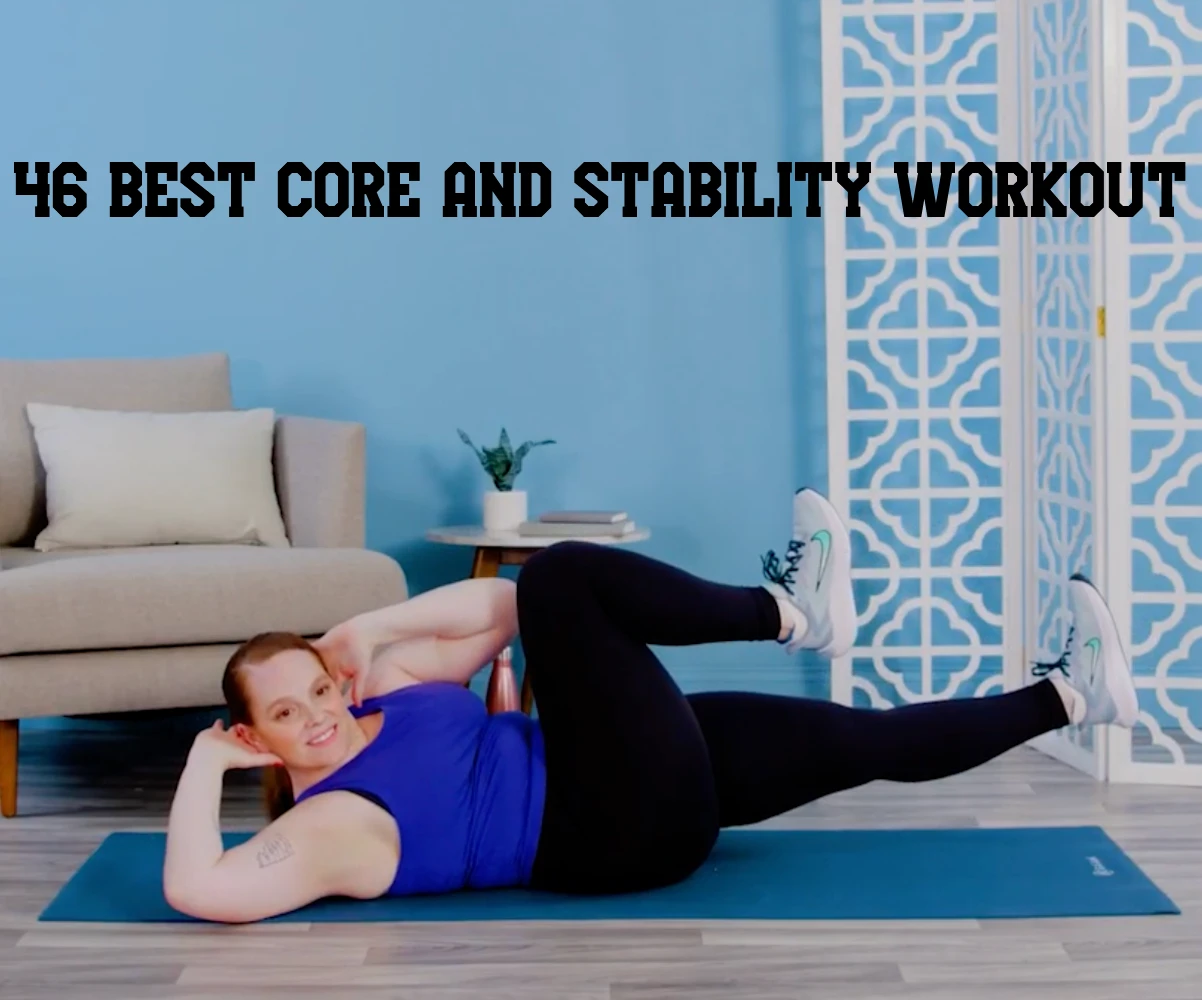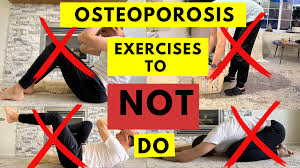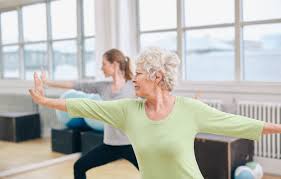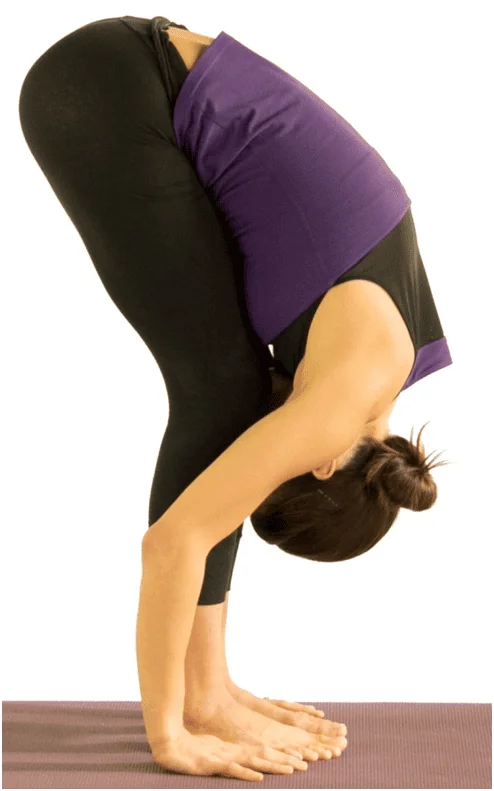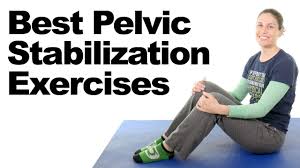41 Best Core And Stability Exercises
Table of Contents
Introduction
- Fitness experts differ in their views on the best ways to train for health, but almost all agree that having a strong core which can be obtained through core stability exercises is essential.
- You’ve undoubtedly heard your favorite Peloton teacher talk about core strength while you hold a plank for what feels like an eternity or seen information about it on TikTok, but you might not know what it really means to have a strong core or how to develop one.
- Your core is comparable to your favorite plant’s roots.
- As a plant grows, its weight is supported by strong, robust roots that keep the plant steady.
- This also applies to your core, which is frequently referred to as the origin or root of all movement.
- Your core is engaged whenever you bend down to pick up something from the floor, reach into your car’s rear seat, or raise anything higher.
- It is essential to have a strong and stable core regardless of your fitness objectives.
- The problem is that not all ab exercises strengthen and stabilize the core deeply.
- For example, crunches engage your rectus abdominis, the superficial muscle on the front “six pack” part of your abs, but they don’t target your transverse abdominis, the deep core muscles that are essential for a solid foundation.
- You’ll require core stability workouts to fully fire those muscles, develop a mind-core connection, and build functional strength.
41 Best Core And Stability Exercises
Following Are The Best Core And Stability Exercises That Target Your Abs, Obliques, And Lower Back With Bodyweight Exercises:
Core Stability Exercise: Bear Hold
- As a NASM-certified trainer, the bear hold is one of my go-to core stability workouts.
- Holding your body up without losing appropriate form is harder than it appears.
- This exercise works your internal obliques, which aid in side flexion and rotation, and your transverse abdominis, which are deep core muscles that support your spine and pelvis.
- This exercise is excellent for strengthening your lower abdominal muscles and assisting in the stabilization of your hips, pelvis, and lumbar spine.
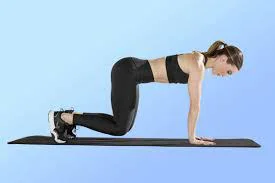
Steps To Follow
- Placing your wrists firmly beneath your shoulders and your knees directly below your hips, begin on your hands and knees.
- The position of your spine should be neutral.
- Controllably raise your knees a few inches off the ground by using your core.
- Maintain this posture by keeping your neck long and attempting not to round or arch your back.
- Work your way up to a minute or more of holding after trying it for ten seconds.
- Perform two or three sets.
Core Stability Exercise: Elbow Plank
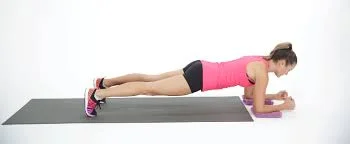
Steps To Follow
- Begin on the floor, hands and knees.
- With your elbows exactly beneath your shoulders, drop onto your forearms.
- Lift your knees off the ground and extend your legs so that your toes are on the floor behind you, using your forearms and toes to support your body.
- Try to keep your back flat and your core engaged while you hold this position.
- Keep your neck long and parallel to your spine, and avoid letting your hips droop or rise.
- Start with maintaining this posture for ten seconds, then gradually increase it to one minute or more.
- Perform two or three sets.
Core Stability Exercise: Glute Bridge
- Since your glutes are a component of your core, Stokes also adores the glute bridge as an exercise for core stability.
- Recall that you should lift to activate your glutes rather than to hyperextend your lower back.
- In other words, you want to lift until your glutes start to contract, but not to the point where your back begins to arch.
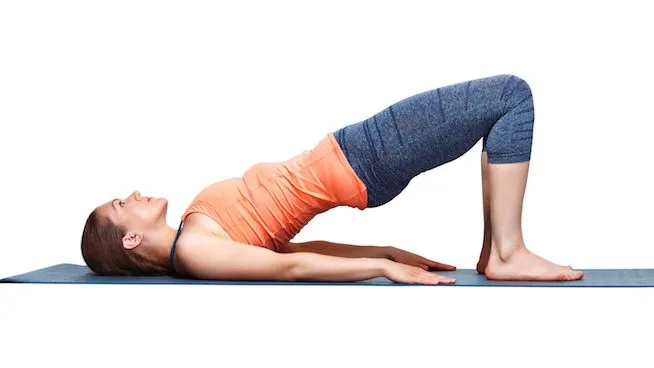
Steps To Follow
- With your feet flat on the floor and your knees bent, lie face up on a mat.
- Place your palms down by your sides.
- Squeeze your butt and intensify your abs as you press through your heels to lift your hips to the ceiling.
- Your body should form a long, diagonal line that extends from your shoulders to your knees.
- Make sure your hips stay up and your spine stays straight as you hold for two to five seconds.
- Reduce to the floor.
- That amounts to one rep.
- Perform thrice as many reps (10–12).
Core Stability Exercise: Bird Dog
- According to Stokes, the bird dog is a fantastic additional core stability exercise that you can incorporate into your routine.
- This pose, which you might have seen in a yoga session, helps you practice maintaining your core stability while moving both your arms and legs.
- It also poses a test to your balance.
- While maintaining this posture, it’s crucial to compress the glute of the extended leg, suggests Stokes.

Steps To Follow
- With your hands behind your shoulders and your knees beneath your hips, begin on all fours.
- Involve your core and maintain a neutral spine.
- Stretch your right leg out behind you to hip height and stretch your left hand forward to shoulder height.
- Try not to tilt your hips, look down at the floor, and maintain a long neck.
- Bring your right leg and left elbow to contact beneath your torso, round your back, and tense your abs.
- That amounts to one rep.
- Continue on the opposite side.
- Perform three sets of four to six repetitions.
Core Stability Exercise: Dead Bug
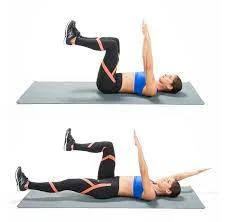
Steps To Follow
- With your spine in a neutral position, lie on your back with your legs extended, knees bent 90 degrees, and shins parallel to the floor.
- To activate your core, press your palms against your thighs.
- This is where you are supposed to start.
- Lengthen your right arm and leg until they’re floating barely above the ground, keeping tension between your left hand and left thigh.
- Avoid arching your back by maintaining a connection between your ribs and hips as well as an engaged core.
- Go back to the beginning and do the same on the left side.
- That amounts to one rep.
- Perform thrice as many reps (10–12).
Core Stability Exercise: Side Bridge
- The side bridge is another technique that I find useful for core stability.
- It engages your obliques as well as some of your smaller hip muscles, which contribute to the stability and strength of your entire core.
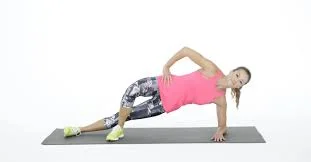
Steps To Follow
- With your elbow resting beneath your shoulder and your knees bent to a 90-degree angle, lie on your left side.
- Raise your thighs off the ground by pushing your hips forward.
- Make sure your upper body, hips, and knees remain in alignment.
- Place your right hand over your right hip at rest.
- Start with maintaining this posture for ten seconds, then gradually increase it to one minute or more.
- Work on each side for two or three sets.
Core Stability Exercise: Plank With Knee Tap
- Your core will be ignited by the plank with knee tap variant if you’re ready to go beyond the plank.
- This exercise is harder than a regular plank because you have to lower each leg to the floor while maintaining a neutral pelvic and hip posture.
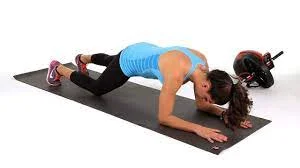
Steps To Follow
- Maintain an elbow plank stance at first.
- Gently, without shifting your hips, tap your left knee on the floor.
- Raise your left knee to take you back to the beginning.
- Be cautious not to arch your back and maintain your core engaged.
- Continue on the opposite side.
- That amounts to one rep.
- Perform ten repetitions in three sets.
Core Stability Exercise: Elbow Plank With Leg Lift
- Try this version with a leg lift once you’ve mastered the knee tap and the standard plank.
- Hampton claims that the elbow plank with leg lift lessens the stability of the pose, requiring you to rely more on your core.
- Try not to allow your hips to tilt or move up or down throughout this core stability exercise.
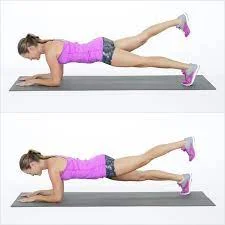
Steps To Follow
- Take an elbow plank to begin.
- Maintaining your pelvis parallel to the floor, raise your right foot approximately six inches off the ground.
- After five seconds of holding, lower the leg.
- Continue on the opposite side.
- That amounts to one rep.
- Perform ten repetitions in three sets.
Core Stability Exercise: Side Plank
- Once you’ve mastered the side bridge, go on to the side plank to test your core strength and stability.
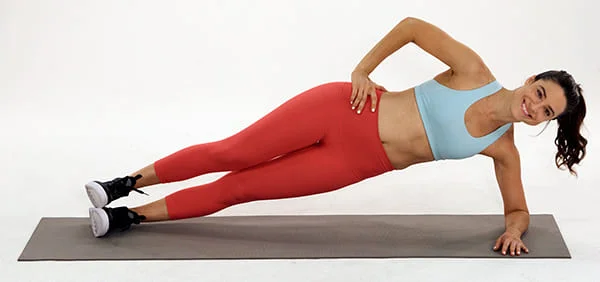
Steps To Follow
- Start by extending your legs and stacking your feet while resting on your left side.
- Subtly place your left elbow beneath your left shoulder.
- To get into a side elbow plank, contract your core, drive your left elbow into the floor, and raise your hips off the ground.
- Place your front foot ahead of your rear foot if you feel unbalanced.
- Start with maintaining this posture for ten seconds, then gradually increase it to one minute or more.
- Work on each side for two or three sets.
Core Stability Exercise: Stir the Pot
- You might be prepared to go on to more challenging core stability exercises like stirring the pot if you’ve mastered the plank and bird dog.
- This core stability exercise is one of my favorites because it makes you fight excessive lower back arching and maintain a braced core, similar to a plank while moving your arms.
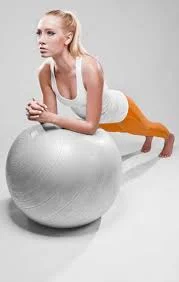
Steps To Follow
- With your forearms resting on top of a stability ball, start off in an elbow plank.
- Use your arms to roll the ball in a tiny clockwise circle while maintaining a strong core and a motionless body.
- Proceed in the other way once more.
- That amounts to one rep.
- Try three sets of four to six repetitions.
Core Stability Exercise: Pallof Press

Steps To Follow
- A cable machine’s carriage should be lowered to around chest height before a D-handle is fastened to the pulley.
- Try adjusting the weight to about 10 pounds, which is one of the lightest selections.
- Feel free to adjust the weight if this is too light or too heavy.
- Grasp the handle with both hands while standing with your left side closest to the machine.
- Then, take two or three steps away to create strain on the cable.
- Make sure your body is square and place your hands at your sternum.
- Indicating that you should reduce your weight if you sense yourself being drawn to the left.
- Press the cable straight out in front of your body while exhaling.
- Don’t turn in the direction of the machine.
- After holding for two seconds, take a step back and start again.
- That amounts to one rep.
- Perform three 8–10 rep sets.
Core Stability Exercise: Farmer’s Carry
- I also believe that the farmer’s carry is an excellent movement for core stability.
- The goal of this exercise is to withstand the weight of the dumbbells while keeping an erect posture.

Steps To Follow
- Start by standing and holding a medium-weight dumbbell or kettlebell in each hand.
- You may change the weight if it seems too heavy or too light.
- Ascertain that your shoulders are back, your chest is open, your core is active, your body weight is equally distributed over each foot, and your spine is in a neutral posture.
- Dumbbells should be held at your sides, an inch or so from your legs.
- Step forward while keeping your back straight and your core active.
- For thirty seconds, keep going.
- Perform three or four sets.
Core Stability Exercise: Forearm Plank with Hip Extension
- This exercise strengthens the muscles in your posterior chain the area on the back of your body in addition to working your core.
- Stability is put to the test by the additional hip extension, which is propelled by the hamstrings and glutes.
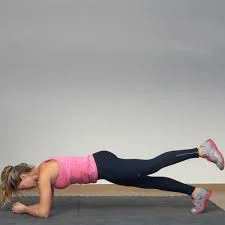
Steps To Follow
- Place yourself on the floor in the tabletop position, with your feet hip-width apart, your knees bent and stacked exactly under your hips, and your hands immediately under your shoulders.
- Elbows in line with shoulders, lower one forearm at a time to the ground.
- Place your palms firmly on the ground or make soft fists.
- Raise both knees off the ground, take one step back at a time, and straighten your legs to form a plank posture for your forearms while contracting your core and squeezing your glutes.
- Keep your head and heels in a straight line while actively pushing away from the floor.
- Keeping your hips parallel to the ground, bring your left foot off the floor and elevate your leg until it is in line with or slightly higher than your back while still holding the plank.
- After pausing, return your left foot to the ground.
- On the other side, repeat.
Core Stability Exercise: Side Plank with Hip Abduction
- This exercise for core stability works your obliques, shoulders, glutes, and hip abductors in particular.
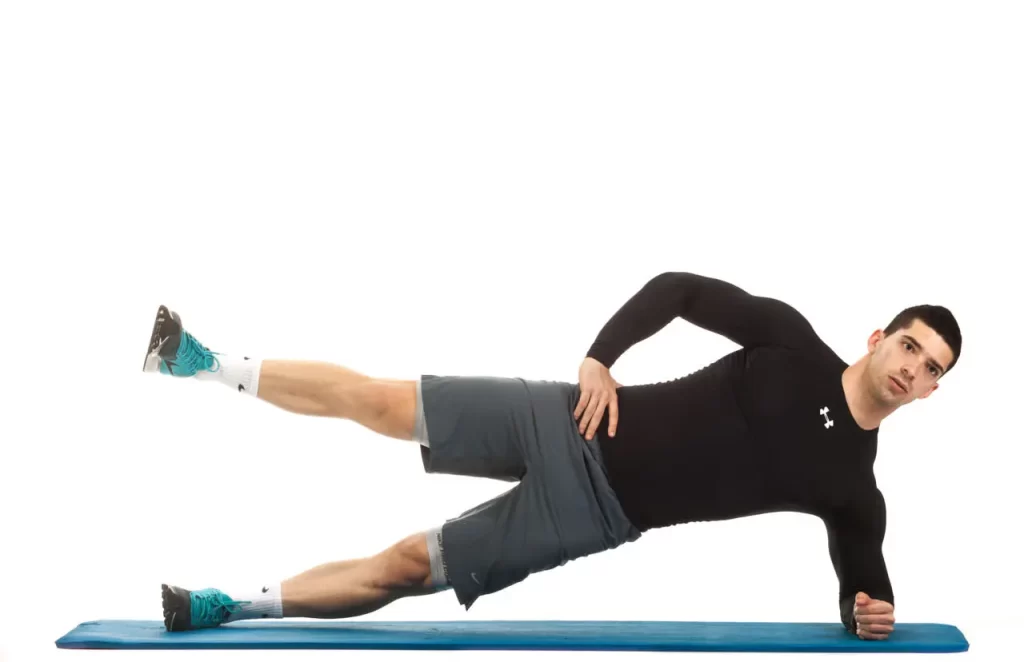
Steps To Follow
- With your right elbow lying on the floor in line with your right shoulder, lie on your right side.
- Bend the right knee to a 90-degree angle and extend the left leg to the left side.
- Grasp left hip with left hand.
- Activate your core, plant your feet and right elbow, and raise your hips off the ground.
- Lift left leg up into the air such that it is parallel to left hip while keeping right knee firmly planted on the floor and left foot flexed.
- Keep your head and left heel in a straight line while looking forward.
Core Stability Exercise: Prone Extension
- This exercise for core stability also strengthens your shoulders and back muscles.
- Keep your glutes contracted and your eyes fixed on the floor as you raise your torso off the ground.
- This will induce greater activity from the entire posterior chain and lessen overextension from the lumbar area.

Steps To Follow
- With your hands close to your ears and your palms facing the ground, assume a face-down position on the floor with your legs straight and your toes touching the ground.
- Engage the back, core, and glutes while maintaining a neutral neck position and looking down at the floor.
- Slowly raise the chest a few inches off the ground.
- After a five-second pause at the peak, progressively lower your chest to where it was before.
Core Stability Exercise: Russian Twist
- Russian twists are a great way to warm up your spine and develop your obliques.
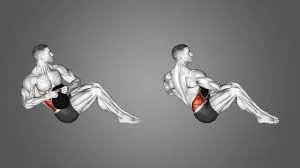
Steps To Follow
- Place your heels on the floor, your feet flexed, and your knees bent out in front of you as you sit.
- When you feel your abdominal muscles contract, bring your hands to your chest and tilt your torso back.
- Add a dumbbell for an additional challenge (as depicted).
- Slowly rotate your torso from right to left.
- Always remember to breathe and maintain a firm core.
- This is one repetition.
Core Stability Exercise: Butterfly Sit-Up
- By placing your legs in the butterfly position, you are essentially forcing proper form by preventing the activation of your hip flexors.
- It’s ideal for group training sessions since it can be simply adjusted to make it harder or easier.
- It’s my go-to ab workout that I incorporate into each client’s regimen.
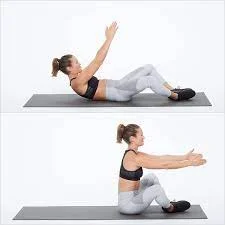
Steps To Follow
- Place your heels on the floor, your feet flexed, and your knees bent out in front of you as you sit.
- When you feel your abdominal muscles contract, bring your hands to your chest and tilt your torso back.
- Add a dumbbell for an additional challenge (as depicted).
- Slowly rotate your torso from right to left.
- Always remember to breathe and maintain a firm core.
- This is one repetition.
Core Stability Exercise: Half-Kneeling Wood Chop
- I love the wood chop because it makes you work in a plane (the transverse, or rotational plane) that many people don’t train in.
- It works your transverse abdominals, lats, shoulders, obliques, and more.
- It is also quite functional.
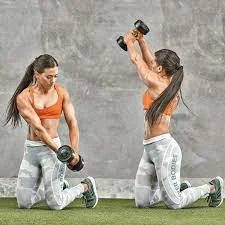
Steps To Follow
- Beginning on your knees, take a few steps forward with one leg while keeping your foot level on the ground and your knee bent 90 degrees.
- With a light-to-medium dumbbell resting by your knee on the ground, grasp it.
- Hold on to the weight’s two ends.
- This is the initial position.
- As you elevate the weight on the opposite side of your body in a diagonal direction towards the ceiling, twist your abdomen.
- Only your core muscles should be spinning; your hips should be looking forward.
- Return the weight to its initial position.
- Complete all of your repetitions on one side, then switch to the other.
Core Stability Exercise: High Boat to Low Boat
- The rectus abdominis, erector spinae, and hip flexors are strengthened by this exercise.
- I’m constantly intrigued and involved because it’s always a challenge.
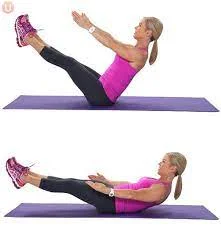
Steps To Follow
- With your feet flat on the ground and your legs bent, sit up straight.
- Maintaining your alignment, gradually raise your legs off the ground until they are at a 45-degree angle with your body.
- Maintain a flat back, use your entire core, and balance on your tailbone.
- For added difficulty, you can straighten your knees instead of keeping them bent like in the photo.
- Extend your arms straight ahead of you, keeping them parallel to the ground.
- Put your hands on the ground beneath your hips if you feel like you need more support.
- It’s High Boat here.
- Take three deep breaths and hold here.
- Then lower your upper body and drop your legs, straightening them out.
- Your knees and shoulder blades should be only a few inches above the ground.
- If you find that too difficult, try keeping them a little higher off the ground while gradually lowering them.
- It’s Low Boat here.
- After holding for a breath, raise your body and legs back up to the High Boat position.
Core Stability Exercise: Forearm Plank Rock
- This exercise helps you become more conscious of your body and its individual muscles, as well as strengthen and stabilize your core.
- This plank variant is an excellent technique to begin core conditioning, and it’s definitely harder than a static plank.
- I like how this exercise highlights the relationship between your shoulders and core.
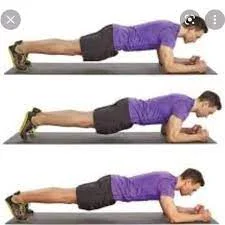
Steps To Follow
- With your forearms on the floor, elbows just beneath your shoulders, hands pointing forward so that your arms are parallel, and legs stretched behind you, begin in the forearm plank position.
- Engage your quadriceps, butt, and core while tucking your tailbone.
- Shift your weight forward by a few inches, causing your shoulders to pass your elbows and come towards your hands.
- Step back a few inches.
- That amounts to one rep.
- Throughout, be careful to maintain your quads, butt, and core activated.
Core Stability Exercise: Side Bend
- This exercise works the obliques and deep core muscles.
- This one has the added benefit of strengthening your back and arms.
- You may perform this workout virtually anyplace, even in your bedroom or a hotel room, and you’ll get an immediate burn.
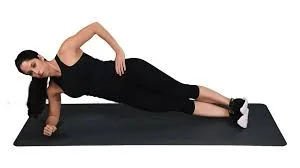
Steps To Follow
- With your feet staggered so that the left is immediately in front of the right, begin in a side plank position with your right hand on the floor, directly beneath your right shoulder (as indicated).
- Alternatively, you might place your left foot on top of your right.
- Activate your butt and core.
- Remain relaxed with your left arm by your side.
- Lift your hips back up after dipping them toward the floor.
- This is one repetition.
Core Stability Exercise: Staggered Stance Resistance Band Row
- Since we utilize our core muscles the most during the day when standing, conditioning those muscles when standing is just as vital as performing several core exercises on the floor.
- This exercise encourages you to engage your core and maintain stability.
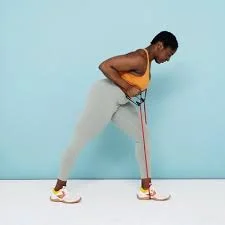
Steps To Follow
- Stagger your posture by placing your left foot in front of your right.
- To ease into this position, widen your stance.
- Hold one end of the resistance band in each hand and loop it beneath your left foot.
- To ensure that your back is straight and your core is active, gently bend your left knee and pivot forward at the hip.
- The band should be loose when you reach fully down toward your left foot with your arms.
- It is where you are in the beginning.
- Perform a row while maintaining your elbows, forearms, and hands parallel to your rib cage and drawing your hands toward your body.
- Bring your arms back to your starting position to complete the rep.
- Complete all of your repetitions on one side before switching to forward-stuttering on the opposite foot.
Core Stability Exercise: Jackknife
- My favorite core exercise is this one since it uses all of your core muscles to keep you stable throughout, working your whole core.
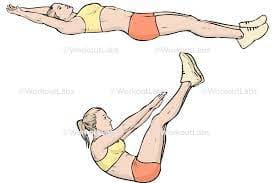
Steps To Follow
- Keep your arms near your ears as you stretch them above while lying face up on the floor.
- Press your lower back onto the floor by tensing your abs.
- This is the initial position.
- Point your toes, tense your thighs, contract your glutes, and raise your upper back and legs off the ground at the same time.
- Bring your hands forward to meet your feet, forming a V with your body.
- As you gradually descend to retake the starting position, maintain your core engaged.
Core Stability Exercise: Hollow Hold to Jackknife
- I adore combining these two workouts into a single, intense core session.
- This is a more advanced exercise, so if your hip flexors or back start to hurt, I advise reducing the repetitions.
- I adore this since it’s effective, tough, portable, and adjustable if necessary (just maintain your knees bent at a 90-degree angle).
- You may add a weight for more sophisticated choices.
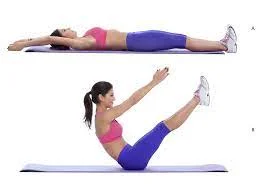
Steps To Follow
- Keep your arms near your ears while you lie face up with them straight above your head.
- Press your lower back onto the floor by tensing your abs.
- Raise your legs off the ground, strain your glutes, squeeze your thighs together, and point your toes.
- To avoid putting undue strain on your neck, raise your shoulders off the floor and maintain a neutral head position.
- Your lower back and hips should be the only parts of your body on the ground, forming the shape of a banana.
- Your mid back and legs need to be elevated off the ground.
- This is a hollow grip, the beginning posture.
- As long as you can, hold yourself in the hollow hold posture for ten seconds or more.
- After that, carefully lower yourself back down to the hollow hold position after raising your arms and legs to meet such that your body forms a V hold for a breath.
Core Stability Exercise: Hollow Body Rock
- This exercises the whole core, namely the rectus abdominis, transverse abdominis, and obliques.
- I adore it since it’s simple to advance, teaches you how to tighten your whole body, and has a high level of ab activation that translates to other workouts like pull-ups and push-ups.
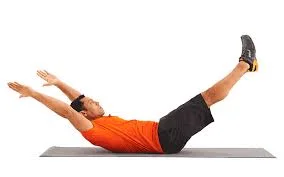
Steps To Follow
- Keep your arms near your ears while you lie face up with them straight above your head.
- Press your lower back onto the floor by tensing your abs.
- Raise your legs off the ground, strain your glutes, squeeze your thighs together, and point your toes.
- To avoid putting undue strain on your neck, raise your shoulders off the floor and maintain a neutral head position.
- You should be in the shape of a banana with just your lower back and hips on the floor.
- Your mid back and legs need to be elevated off the ground.
- This is the initial position.
- Keep everything tight as you slowly rock forth and back until your hands and feet are almost touching the floor.
Core Stability Exercise: C-Curve
- This is the hardest portion of an isometric hold in a sit-up.
- By maintaining your abs tense all the time, you’re training them.
- Additionally, because your spine is extended rather than compressed and your tailbone is tucked in, it’s a secure posture for your back to remain in.

Steps To Follow
- With your knees bent and your feet flat on the ground, assume a tailbone position.
- Retain each leg at the level of the knee.
- As if you were lowering your torso back after a sit-up, round your spine, tuck your tailbone, and start to lower yourself.
- Stop and hold at the midway point (as shown in the above photo).
- Make sure your quads and entire core are working.
Core Stability Exercise: Single-Leg Resistance Band Deadlift
- We should be in postures that demand the core to actually do its job and enable different body parts to collaborate and interact with one another in order to train for a stronger core.
- This implies that we must walk, stand, bend, turn, and lean.
- We have to move about in three dimensions.

Steps To Follow
- Place the band beneath your left foot as you stand with your feet together.
- Grasp one end of the band with your right hand so that it is taut when you stand with your arm down. (You can hold the band loosely in your left hand or just lay the other end on the ground.)
- Put all of your weight on your left foot by shifting.
- Hinge forward from the hips, tip forward, and finally bring your chest parallel to the floor by letting your right foot rise up straight behind you.
- Maintain an active core to aid with balance.
- Lessen the strain in the band by letting your right arm fall naturally toward the floor as you hinge.
- To get back to where you were before, place your right foot back on the ground.
- Complete each repetition on one side, then switch to the other.
Core Stability Exercise: Wheelbarrow
- One of those activities that truly helps me to concentrate my thoughts is this one.
- If you don’t maintain awareness, focus, and presence during the process, your lower back may end up bearing the majority of the strain.
- Additionally, you may utilize a variety of objects as equipment for this.
- There are several options available for this exercise, including the TRX kneeling rollout, gliding discs, using a sheet pan on grass, using a Megaformer or reformer if you have one, using an old-fashioned ab roller, etc.
- It is quite difficult and targets your shoulder stabilizer muscles and abs in particular.
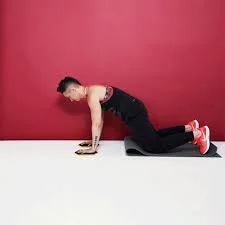
Steps To Follow
- With a glider or towel beneath each hand, begin on all fours.
- To get your back flat, tuck your tailbone and squeeze your core, as if you were performing a plank from your knees.
- This is the initial position.
- Push your hands slowly in front of you while maintaining a straight arm position.
- Keeping your torso in a plank posture, glide as far as you can.
- To go back to the starting position, press against the floor and draw your arms back.
Core Stability Exercise: Rolling Like a Ball
- This exercise is a fantastic method to engage your core and add some fun cardio.
- While you rock back and forth, imagine that your abs are doing all the work.

Steps To Follow
- With your feet flat on the ground and your knees bent, sit up straight.
- Hold on to the outside of your ankles while encircling your legs with your arms.
- Bend your head and chest toward the direction of your knees.
- After firmly contracting your core muscles, roll your body back until your shoulders make contact with the floor.
- Avoid rolling to the point where your head or neck is in contact with the ground.
- Ascend back to a sitting posture.
Core Stability Exercise: Leg Raise
- In addition to targeting the lower abdomen region, this exercise is excellent for lengthening and strengthening the hip flexors, which are essential for core stability and strength.
- Not only will it build your abs, but it will also aid with hip mobility, which will enhance every aspect of your fitness quest.
- Including these will improve your flexibility in the hip flexor area, which is often a problem for those who spend all day sitting at a desk.
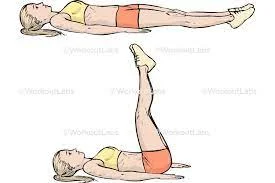
Steps To Follow
- For additional support, place your hands at your sides or tucked under your hips and lie face up.
- Lift your legs gradually until the soles of your shoes face the ceiling, keeping them together and as straight as you can.
- Reposition your legs slowly after that.
- Keep your feet floating a few inches off the ground rather than touching the ground.
- That amounts to one rep.
- Keep your lower back flat on the floor during this exercise.
- Don’t droop your legs as much if you have trouble accomplishing it.
Core Stability Exercise: Breakdancer
- These are my favorite since they emphasize having the strength to withstand external forces while attempting to shift your trunk.
- These enhance your general motor control as well as your capacity to rapidly change directions and accelerate and decelerate.

Steps To Follow
- With your hands behind your shoulders and your knees beneath your hips, begin on all fours.
- Elevate your knees a little bit off the ground.
- Maintaining a low butt, rotate your body to expose your left side by extending your right leg beneath your torso.
- As demonstrated, hold your left arm out in front of you.
- Stretch your arm out to tap your right foot when you begin to feel more at ease with the exercise and desire an added test to your balance.
- Go back to the beginning and repeat the process on the opposite side.
Core Stability Exercise: Tabletop Leg Press
- If you struggle to connect with your core or have a divided abdominal wall, this exercise is quite beneficial for you.
- I refer to this as a “core connector.”
- Getting in touch with my inner self and putting my lower back in a safe place is something I do as soon as I wake up, literally while lying in bed.
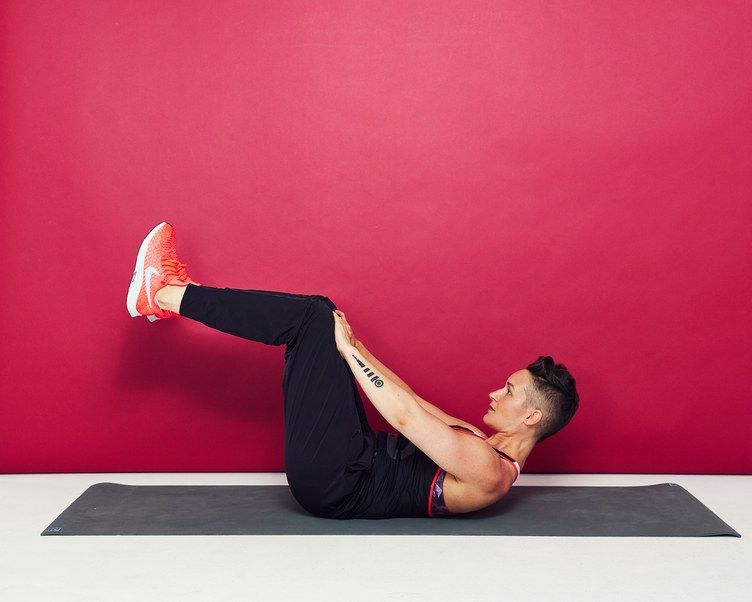
Steps To Follow
- Place your legs up in a tabletop posture, facing up, with your knees bent 90 degrees and stacked over your hips.
- Press your lower back onto the floor by tensing your abs.
- Squeeze your hands together and place them on the front of your quadriceps.
- Press your hands away while simultaneously driving your quads into them.
- Your body should not be visibly moving, but your center should be gripped by a fierce struggle.
Core Stability Exercise: Row Your Boat
- I can really feel my oblique muscles working with this workout, and I enjoy the palpable sense of strength building.
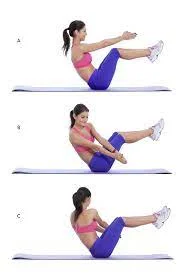
Steps To Follow
- With your feet flat on the ground and your legs bent, sit up straight.
- Maintaining your alignment, gradually raise your legs off the ground until they are at a 45-degree angle with your body.
- Maintain a flat back, use your entire core, and balance on your tailbone.
- For added difficulty, you can straighten your knees instead of keeping them bent like in the photo.
- Extend your arms straight ahead of you, keeping them parallel to the ground. Put your hands on the ground beneath your hips if you feel like you need more support.
- Keep switching sides.
Core Stability Exercise: Core Roll-Up
- I like this technique because it starts from a fully extended stance, which means you have to utilize less momentum to rise off the floor and do a lot more core work.
- Keeping your heels on the ground presents an additional obstacle with this one.
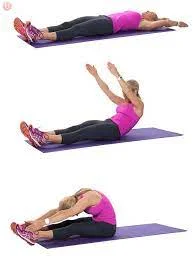
Steps To Follow
- Arms stretched over your head, lying on the floor, while you lie face up.
- Raise your arms to the point where your wrists meet your shoulders, and then slowly curl your spine off the ground, beginning at your shoulders and working your way down to your lower back.
- Maintaining a taut core throughout, curl up into a sitting posture, and then continue folding your torso over your legs.
- Roll back down to the floor by reversing the motion and lowering your shoulders to your lower back.
- That amounts to one rep.
Core Stability Exercise: Single-Leg Jackknife
- I adore this exercise because it targets the rectus abdominis while also toning the obliques as you reach across your body.
- It’s a true ab burner. It is also modifiable.
- You may progress to a complete sit-up by starting with a crunch single-leg reach.
- You’ll quickly become proficient at the single-arm, single-leg combination and be working on complete V-ups that use both arms and legs at the same time.
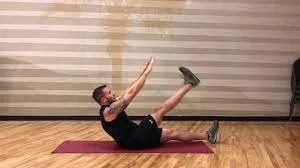
Steps To Follow
- With your arms by your sides, lie face up.
- Press your lower back onto the floor by tensing your abs. This is the initial position.
- Squeeze your glutes and thighs together as you raise your upper back and left leg off the ground at the same time.
- Bring your right hand forward to meet your left foot.
- Make a V shape with your left leg and body.
- As you gradually descend to retake the starting position, maintain your core engaged.
- Repeat with the arm and leg on the other side.
- Keep switching sides.
Core Stability Exercise: Plank Shoulder Tap
- To resist rotation through the midsection is the aim of this maneuver.
- Your core must contract in order to maintain alignment as you raise your hand off the ground.
- Your belly button should be toward the floor, and your hips should be totally stable.
- This workout significantly increases your stability compared to other core workouts that require you to lie down, such as crunches or sit-ups.
- Not only are your abs working, but your back, shoulders, glutes, and hamstrings are all being worked out.
- By just changing the breadth of your feet, you may make it easy or harder.
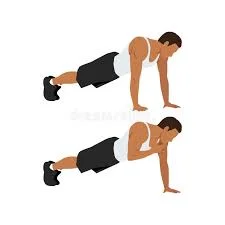
Steps To Follow
- Starting in the high plank position, place your hands shoulder-width apart, your shoulders placed perfectly over your wrists, your legs extended behind you, your core and glutes activated, and your palms flat on the floor.
- Tap your right hand to your left shoulder utilizing your glutes and core to keep your hips as stable as possible.
- Avoid swinging with your hips.
- Using your left hand, do the same motion to your right shoulder.
Core Stability Exercise: Hip Dip
- This activity will support and strengthen the transverse abdominis and obliques, which help tighten and strengthen the entire core.
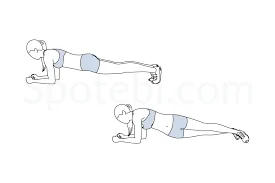
Steps To Follow
- With your forearms on the floor, elbows just beneath your shoulders, hands pointing forward so that your arms are parallel, and legs stretched behind you, begin in the forearm plank position.
- Engage your quadriceps, butt, and core while tucking your tailbone.
- Tap the floor while rotating your hips to the left.
- On the right side, repeat.
- Keep switching sides.
Core Stability Exercise: Forearm Plank Leg Lift
- In a forearm plank, whatever kind of instability you can induce will activate your deep core muscles, which hug your hips, and spine, and extend into your shoulders.
- In addition to causing instability, lifting your leg in a plank strengthens your glutes, which support your lower back.
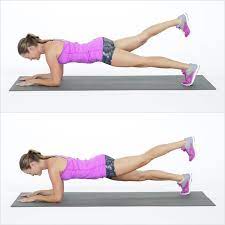
Steps To Follow
- Begin on your hands and knees, then descend to your forearms, keeping your elbows just beneath your shoulders, your palms facing downward, your fingertips pointing forward, and your forearms parallel to one another.
- To get your legs straight and completely stretched, raise your knees off the ground and take a step back with your feet.
- Retighten your quads, butt, and core; do not arch your back.
- Consider length; picture yourself reaching simultaneously out through your heels and out from the top of your head.
- Face the floor to maintain a neutral posture for your neck.
- Raise one foot off the ground while bracing your core.
- Go back to where you were before and repeat on the opposite side.
- This is one repetition.
- Keep switching things up.
Core Stability Exercise: Forearm Side Plank
- Side planks work the glute medius and the quadratus lumborum, two muscles that maintain the spine and are frequently neglected.
- When you’re in a single-leg stance, which is where you are most of the time when running, these muscles assist in maintaining your pelvis level.
- Targeting the side hip stabilizer muscles with lateral planks is a good technique to address the correlation between running injuries and weakness.
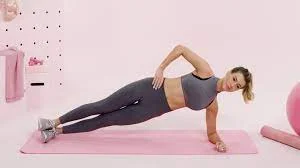
Steps To Follow
- With your elbow placed beneath your shoulder and your hand in front of your body, lie on your right side with your body propped up on your right forearm.
- Squeeze your core and glutes to raise your hips off the ground as you extend your legs and place your left foot on top of your right.
- Raise your left hand vertically toward the sky.
- Take up this role.
- Repeat on the other side.
Core Stability Exercise: Dumbbell Deadlift
- Deadlifts work the core muscles, such as the rectus abdominis, internal and external obliques, transverse abdominis, and erector spinae, in addition to the lower body.
- The deadlift is a useful exercise that targets muscles far below the surface, which will aid with posture, general core and body strength, and lower the risk of lower back problems.
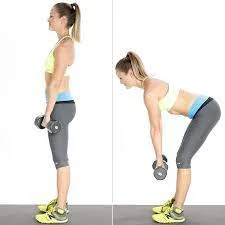
Steps To Follow
- Hold a dumbbell in each hand while standing with your feet hip-width apart, your knees slightly bent, and your arms relaxed by your quadriceps.
- This is where everything begins.
- As you push your butt back and maintain a flat back, bend your knees slightly and hunch forward at the hips.
- Reduce the weight gradually along your shins.
- Your upper body ought to be almost parallel to the ground.
- To stand up straight and get back to the beginning posture, push through your heels while maintaining a strong core. As you pull, keep the weight toward your shins.
- Squeeze your butt and pause at the peak.
- That amounts to one rep.
Core Stability Exercise: Boat Pose
- Because it is similarly an isometric exercise that works the rectus and transversus abdominis as well as the internal and external obliques, I like to explain to my customers that this exercise is related to the plank.
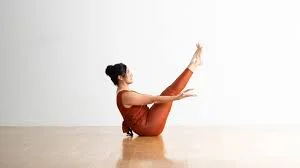
Steps To Follow
- With your feet flat on the ground and your legs bent, sit up straight.
- Maintaining your alignment, gradually raise your legs off the ground until they are at a 45-degree angle with your body.
- Maintain a flat back, use your entire core, and balance on your tailbone.
- For added difficulty, you can straighten your knees instead of keeping them bent like in the photo.
- Extend your arms straight ahead of you, keeping them parallel to the ground.
- Put your hands on the ground beneath your hips if you feel like you need more support.
- Maintain this role.
Core Stability Exercise: Mountain Climber With Gliders
- If you perform this core workout quickly, it can help improve your cardiovascular health in addition to improving stability.
- Additionally, this version requires greater core activity than mountain climbers without gliders since you must use your core muscles continuously to move the glider back and forth.
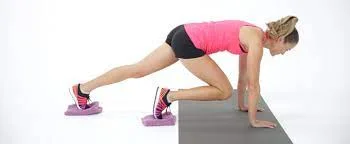
Steps To Follow
- With your toes on a pair of gliders, begin in a high plank position with your hands shoulder-width apart (or wider if that’s how you normally perform push-ups), shoulders over wrists.
- Sliding your right foot forward and pulling your right knee to your chest requires you to engage your core.
- Bringing your left knee up to your chest, move your right foot back while you slide your left foot forward.
- Keep switching, moving swiftly. Throughout, remember to maintain a flat back and an engaged core.
- For a greater aerobic challenge, move more quickly.
- Slow down if you are having problems keeping your form.
Core Stability Exercise: Suitcase Carry
- Since this exercise involves anti-lateral flexion, you must contract your core to prevent bending to the side.
- It works well to teach steadiness in the core.
- In order to remain upright and prevent the weight from pushing you to the side, you must fully contract your core muscles.
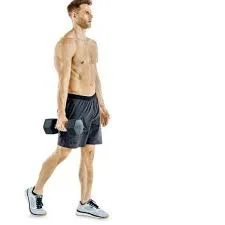
Steps To Follow
- A dumbbell or kettlebell should be placed close to one of your feet.
- Squat down to secure the weight in a neutral, palms-in grip.
- Stand up with your core braced and your chest up.
- As you go, resist the need to slump your body to make up for the extra weight by keeping your posture upright.
- Consider that you are being drawn toward the ceiling by a string that is attached to the top of your head.
- Squat to return the weight to the floor once you’re done.
- On the other side, repeat.
Core Stability Exercise: Plank Pull-Through
- This is a fantastic exercise to focus on anti-rotation and anti-extension, and it’s an excellent movement for core stability.
- One of the greatest and most sophisticated plank progressions is this one.

Steps To Follow
- With your hands shoulder-width apart, your shoulders squared over your wrists, your legs stretched behind you wider than hip-width apart (this will aid with stability), and your core and glutes worked, begin in the high plank position.
- Dumbbells should be positioned just behind one palm.
- This is where everything begins.
- Reach across your body to grab the dumbbell with the hand opposite it and pull it to the other side of your body.
- Reposition your hand so that it is toward the floor.
- To stop yourself from shifting side to side, keep your core braced.
- That amounts to one rep.
- Continue alternating while repeating on the opposite side.
Core Stability Exercise: Hollow Body Hold
- This is an excellent workout for your lower back and deep core muscles. It is excellent for people who need to strengthen their core in order to relieve lower back pain because it also helps with stability and posture.
- This workout is suitable for beginners and may be adjusted to suit any level of fitness.
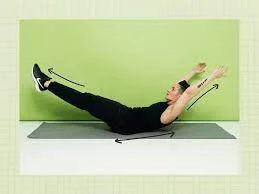
Steps To Follow
- Place your arms above your head, near your ears, and lie face up on a mat.
- Press your lower back against the floor by tensing your abs.
- Raise your legs off the ground, strain your glutes, squeeze your thighs together, and point your toes.
- To lift your arms, elevate your shoulders off the floor.
- Maintain a neutral head posture to avoid putting undue strain on your neck.
- You should be in the shape of a banana, with just your lower back and hips touching the floor.
- Your legs and mid-back should be off the ground.
- Take up this role.
Core Stability Exercise: Leg Lift With Hip Tip
- One of the best ways to train the core to stabilize the body during motion is to incorporate the hip lift into a standard leg raise.
- True core strengthening happens when the hip lift is executed with control, as opposed to the frequent mistake of using momentum to get into it.
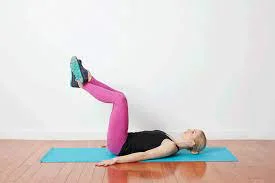
Steps To Follow
- Place your arms at your sides on the floor and lie face up.
- Put your hands just behind your butt on each side of your lower back requires more support.
- This is where everything begins.
- Keep your legs together as you slowly raise them toward your face, pausing when they are nearly vertical.
- At the peak, raise your hips just a little bit that is, toward your tummy.
- It will raise your butt slightly off the ground.
- Lower your hips to the ground once again.
- After that, gradually return your legs to their initial posture.
- Make sure you maintain a flat back on the ground.
The Benefits of Core Stability Exercises
- To refresh your recollection, your transverse abdominis, rectus abdominis, internal and external obliques, and erector spinae are just a few of the muscles that make up your core.
- Protecting the spine is its primary goal, according to Movement Vault’s creator.
- To achieve it, you require stability in the muscles that surround your spine, particularly in your core.
- Although it can be difficult to define, “core stability” typically refers to your core’s capacity to provide enough stiffness to stop your spine from moving in a way or to a degree that could result in harm and to produce this stiffness, you must engage your core muscles.
- You can do this automatically in daily life by twisting your body swiftly to grab an article that falls off the counter, or deliberately by bracing yourself during a strenuous squat.
- In certain unconscious conditions, you might not use your core to its full potential, but stability still requires some degree of active muscle activity.
- It has long been believed that strengthening your trunk control through core stability exercises is essential to preventing lower back pain.
- Although research hasn’t completely supported this benefit, and there are other potential contributing factors to lower back pain, core stability training may help ward off discomfort.
- However, maintaining enough core stability can assist in preventing tightness in other body parts.
- “Your body will look for stability elsewhere if you don’t have that stability in your midsection.”
- For stability, it will go to the next joint, usually the hips, either above or below.
- This will thus limit part of your range of motion and mobility and may contribute to stiff hips.
- Exercises for core stability not only maintain your body pain- and injury-free, but they also improve your performance in the gym and in your daily life.
- In other words, “you’re going to be performing everything that includes movement better the better you are able to engage and regulate your midsection.”
Conclusion
Exercises that work several muscle groups should be prioritized above those that just work one or two. Planks, squats, lunges, and anti-rotation presses are a few examples. Give shape precedence over weight. It is more crucial to execute workouts with proper form than it is to use large weights improperly. Include both active and static workouts.
Dynamic workouts need movement, whereas static exercises require keeping a posture for a predetermined period of time. For the development of the core and stability, both kinds of workouts are crucial.
You should begin your workouts slowly and gradually increase the length and intensity. This will lessen the chance of accidents. When your body tells you to take a day off, do so. Overtraining might impede your development and result in injuries.
FAQ
Traditional core workouts help to develop and stabilize your core. Planks, situps, and fitness ball exercises are examples of traditional core workouts. Another example of a traditional core workout is a bridge. Bend your knees while lying on your back to perform a bridge.
Kegels and drawing in—which involves bringing the navel toward the spine—are two exercises. The capacity to reduce movement between the rib cage and pelvis is known as lumbar-pelvic stability. Abdominal bracing, or the isometric contraction of the core muscles, is one way to do this.
Every day, you may improve your core with a variety of workouts. Avoid practicing ab exercises alone, though, if you want well-defined abs. Rather, include full-body strength training regimens that prioritize free-weight movements such as chest presses and dumbbell squats.
Planks are an excellent substitute for crunches, which are a frequent workout for the abdominal muscles. They may aid in enhancing stability and core strength. Beyond only getting a physique fit for the beach, core training is important. Maintaining mobility, lowering the risk of injury, and increasing stability can all be achieved with core exercises.
Our ability to perform at our best and avoid injuries is enhanced by having a strong, stable core. Ideally, we should be able to produce 360 degrees of stiffness around our spine when we move, run, leap, throw, lift items, and distribute force throughout our body in order to protect our back.
References:
- Pridgett, T. (2023, October 16). 12 Best Core Stability Exercises, According to Trainers | POPSUGAR Fitness. POPSUGAR Fitness. https://www.popsugar.com/fitness/best-core-stability-exercises-46724984
- Falk, M. (2022, December 23). The Best Core Stability Exercises to Level Up Your Workouts. Shape. https://www.shape.com/core-stability-exercises-6979291
- CPT, A. M. W., RYT, E. M. C., McCoy, J., & CPT, C. S. (2023, June 2). 34 Core Exercises Top Trainers Swear By to Work Every Part of Their Abs. SELF. https://www.self.com/gallery/core-exercises-top-trainers-swear-by

